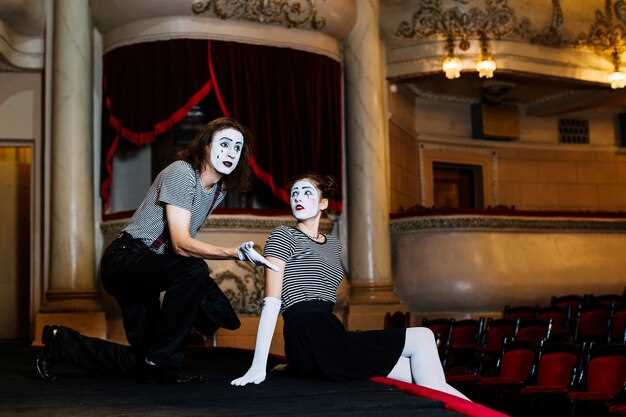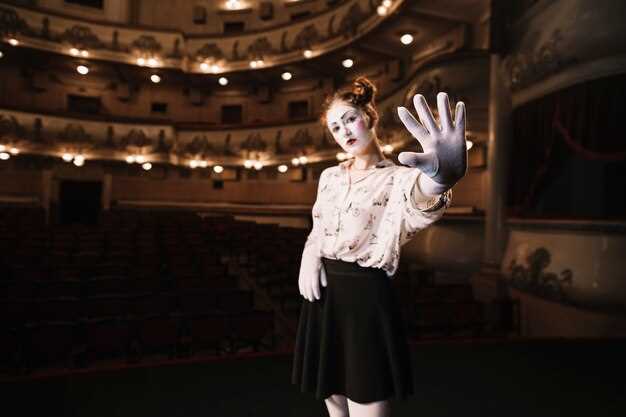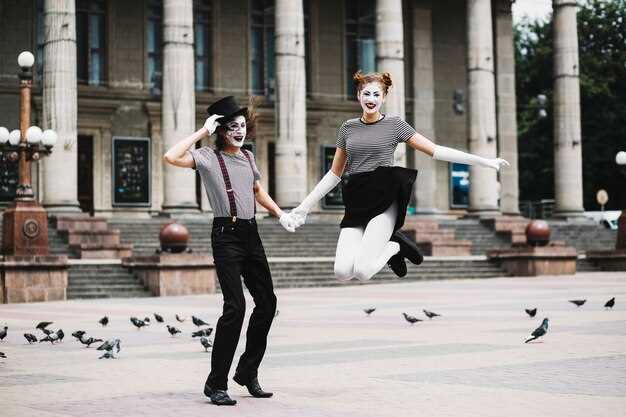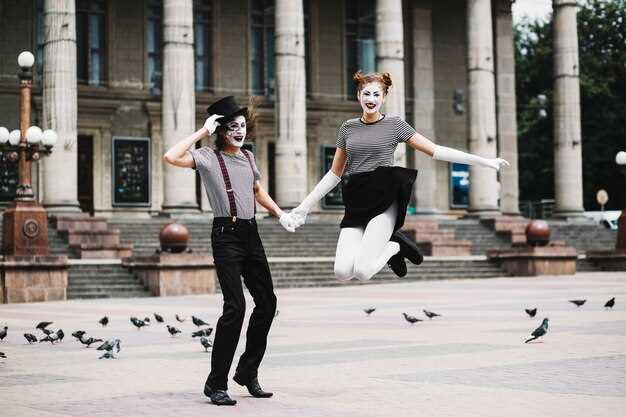Join a local dance class or community theatre group; you’ll witness firsthand the power of creative expression. Engaging in these activities not only hones your skills but also cultivates a profound sense of self-assurance. As you step onto the stage or practice your routine, the exhilarating rush of performance becomes a platform to confront fears and celebrate achievements.
Both dance and theatre focus on physical presence and emotional expression, which play a crucial role in boosting confidence. In a dance class, mastering a new routine showcases your progress while fostering a connection with your body. Similarly, theatre encourages you to connect with different characters, providing a safe space for self-exploration and personal growth. Every performance or rehearsal becomes an opportunity to push boundaries and expand comfort zones.
Engagement with peers during these activities also enhances social skills. Collaborating on group performances builds camaraderie and communication, vital for personal confidence. Embrace the chance to learn from others, accept constructive feedback, and support fellow participants. Each interaction solidifies your sense of belonging while further enhancing self-esteem.
Set achievable goals in your dance or theatre journey. Whether it’s nailing a challenging move or delivering a heartfelt monologue, celebrating these milestones reinforces confidence. Moreover, reflecting on your progress will help you recognize the skills you’re developing and the fears you’re overcoming. Remember, every small step contributes to the larger picture of self-improvement and empowerment.
Understanding the Connection Between Performance and Confidence

Engage in regular performance activities to enhance self-assurance. Participating in theatre or dance cultivates skills like presence and communication. These activities provide opportunities to step outside comfort zones, which is key to building confidence.
Acknowledge the physiological changes during performance. Noticing increased heart rate and adrenaline can remind individuals of their own empowerment. These bodily responses serve as indicators of being fully alive in the moment, allowing performers to channel energy into their art.
Practice consistently in a supportive environment. Regular rehearsal creates familiarity, reducing anxiety and enhancing comfort. Surrounding oneself with encouraging peers fosters a sense of community that builds confidence over time.
Utilize constructive feedback to improve. Seeking evaluations from trusted mentors helps identify strengths and areas for growth. This process not only sharpens skills but also reinforces belief in one’s capabilities.
Set attainable goals for performances. Start with manageable objectives that progressively challenge abilities. Celebrating small victories amplifies confidence and reinforces a positive mindset.
Embrace the unique style that each performer brings to the stage. Authenticity resonates with audiences and enhances self-esteem. Recognizing personal strengths cultivates a sense of pride in individual contributions.
Visualize success before stepping onto the stage. Mental imagery prepares individuals for performances, easing nerves and boosting confidence. Picture a successful execution of movements or lines; this practice leads to more grounded presentations.
Reflect on personal growth through performance experiences. Assessing progress allows performers to see how far they’ve come, instilling a sense of achievement and bolstering self-confidence.
Incorporating these practices into a routine not only improves performance skills but also strengthens confidence in all walks of life.
How Dance Classes Can Boost Self-Esteem

Joining dance classes enhances self-esteem through various engaging activities. Regular participation not only improves physical abilities but also builds social skills. Connecting with others in a group setting creates a sense of belonging, which is vital for self-worth.
Physical Expression and Body Awareness
Moving to music provides an outlet for self-expression. As individuals learn new moves, they grow more comfortable with their bodies. Techniques like stretching and practicing balance increase body awareness, leading to a positive self-image. Regular progression in classes reinforces this improvement, offering immediate feedback that boosts confidence.
Goal Setting and Achievement
Each class presents an opportunity for setting specific goals, such as mastering a particular routine or improving technique. Achieving these goals fosters a sense of accomplishment. Tracking progress through mini-performances or evaluations enhances motivation and promotes a positive mental outlook.
| Benefits of Dance Classes | Impact on Self-Esteem |
|---|---|
| Social Interaction | Builds connection and reduces feelings of isolation |
| Physical Fitness | Improves body image and health perceptions |
| Skill Development | Boosts confidence through mastery of dance forms |
| Creative Expression | Encourages individuality and self-acceptance |
| Performance Opportunities | Enhances public speaking skills and reduces anxiety |
Regular engagement in dance classes leads to a cycle of confidence-building experiences. As participants witness their growth, they gain a stronger belief in themselves, further enhancing self-esteem in various life aspects.
Public Speaking: Techniques to Enhance Your Stage Presence

Engage your audience with powerful body language. Stand tall, maintain an open posture, and make eye contact to create a connection. Use gestures that complement your words, but avoid excessive movements that may distract. Aim for a balance that keeps your audience focused on your message.
Vocal Techniques
Your voice is a key tool in communication. Vary your tone, pace, and volume to maintain interest. Practice projecting your voice to ensure clarity without yelling. Use pauses effectively to emphasize points and give listeners time to absorb information.
Preparation and Practice
- Rehearse your speech multiple times, focusing on flow and transitions.
- Record your practice sessions to identify areas for improvement.
- Seek feedback from trusted friends or colleagues to refine your delivery.
Visual aids can enhance your presentation. Use slides, props, or videos to support your key points, but ensure they do not overshadow your speech. Keep visuals simple and relevant.
Manage anxiety by using relaxation techniques before stepping on stage. Deep breathing exercises help center your thoughts and calm your nerves. Visualize a successful presentation to boost your confidence.
Involve your audience with questions or interactive elements. This creates engagement and makes your message resonant. Pay attention to their reactions and adjust your delivery as needed.
Finish strong. Summarize your main points and leave the audience with a memorable closing statement. Call to action or thought-provoking statements can encourage further reflection.
Using Movement to Overcome Stage Fright

Focus on your breath. Initiate a series of deep, controlled inhalations and exhalations before stepping on stage. This calms the nervous system and sets a steady foundation for movement.
Engage in light physical warm-ups. Simple stretches and shakes release tension in your muscles. Aim for movements that encourage flexibility and flow, allowing your body to relax and become more receptive to performing.
Incorporate awareness of your space. Practice moving around your performance area, paying attention to your surroundings. This familiarity turns apprehension into confidence as you become more at ease with the environment.
Use expressive gestures. Integrate large, intentional movements to express emotions or themes of your piece. This not only enhances your performance but diverts your focus away from anxiety and towards your character or message.
Adopt a strong posture. Stand tall with your shoulders back and head high. This physical stance radiates confidence, which can influence your mental state positively. Others perceive you as self-assured, while you feel more secure in your performance.
Practice visualization. Imagine moving confidently on stage before the actual performance. Visualizing success prepares your mind and body, reinforcing the belief that you can overcome fear.
Finally, welcome the nervous energy. Channel that adrenaline into your movements. Rather than resisting fear, embrace it as a natural response, allowing it to enhance your performance and connection with the audience.
Active Listening as a Tool for Effective Communication
Practice active listening by focusing entirely on the speaker. Make eye contact and use affirming nods to convey engagement. This approach builds trust and encourages open dialogue, vital in both theatre and personal interactions. Reflect on what the speaker says by paraphrasing their message to demonstrate understanding. This technique not only clarifies points but also shows that you value their perspective.
Feedback and Clarification
Ask open-ended questions to invite deeper discussion. For example, “What was your favorite part of that performance?” This prompts the speaker to expand their thoughts, providing a richer context for your conversation. If something is unclear, seek clarification instead of making assumptions. Use phrases like, “Can you explain that further?” to encourage more detailed responses.
Non-Verbal Cues
Pay attention to non-verbal signals, such as gestures and facial expressions. These cues often provide deeper insights into feelings and emotions, enhancing your understanding. Reflecting back not just the words but the emotions behind them can create a strong connection. For example, saying, “It sounds like that moment made you feel really excited,” validates their feelings and invites more sharing.
Incorporating active listening into your interactions fosters a supportive environment. This openness enriches collaboration and boosts confidence in both theatre productions and personal relationships. Engage fully, respond thoughtfully, and create a culture where everyone feels heard and valued.
Group Performances: Building Trust and Support Among Peers
Participating in group performances cultivates a strong sense of trust among peers. Begin by assigning roles based on individual strengths. This builds confidence and encourages collaboration.
Encourage open communication during rehearsals. Allow everyone to express their ideas and concerns, ensuring that everyone feels heard. Create a safe environment where constructive feedback can flourish without fear of criticism.
Fostering Collaboration
- Incorporate trust-building activities before rehearsals. Simple exercises like trust falls or group circle games create strong bonds.
- Encourage pairs to practice together. This not only improves skills but creates valuable connections.
- Host regular check-ins within the group. Allow everyone to share progress, challenges, and successes to strengthen relationships.
Assign tasks strategically within the group. This encourages leadership skills and shows reliance on one another. When each member knows their role contributes to the whole, trust naturally develops.
Creating Team Spirit
- Organize performances that celebrate the group’s achievements. Highlight individual contributions during the show, boosting morale.
- Incorporate warm-up sessions that are both physical and fun. These shared experiences reduce tension and create camaraderie.
- Ensure every performance ends with a group reflection. Discuss what worked and what could be improved, reinforcing shared goals.
Engaging in joint performances not only enhances skills but solidifies relationships. Celebrating each other’s successes builds a supportive community that empowers individuals to shine on stage.
Improvisation Exercises to Strengthen Quick Thinking
Incorporate the “Yes, And” technique into your practice. This approach encourages participants to accept and build upon each other’s ideas. Begin in pairs, where one person states a sentence and the other responds with “Yes, and…” followed by their own addition. This simple exercise cultivates a collaborative spirit and quick thinking.
Try the “One Word Story” game. Gather in a circle and create a story one word at a time. Each participant adds a single word, requiring quick responses. This encourages spontaneity and sharpens the ability to think on one’s feet while enhancing storytelling skills.
Engage in the “Emotion Charades” activity. Write various emotions on slips of paper and place them in a hat. Participants randomly select a slip and must portray the emotion without words while others guess. This exercise hones one’s ability to respond rapidly to emotional cues and enhances non-verbal communication.
Conduct the “Alphabet Game.” Choose a topic and create a conversation where each line of dialogue must start with the next letter of the alphabet, starting from A. This challenge demands quick thinking and creativity, fostering improvisational skills.
Utilize the “What Are You Doing?” exercise. In a group, one person mimics an action while another asks, “What are you doing?” The first participant must respond with a different action, leading to humorous and spontaneous exchanges. This builds adaptability and encourages quick shifts in thought.
Experiment with the “Freeze Frames” technique. Two participants start a scene based on a suggestion. At any moment, another can yell “Freeze!” and take one participant’s place, continuing with a new scenario. This sharpens focus and the ability to pivot quickly in storytelling.
Finish with “Last Minute Gifts.” Participants sit in a circle and pass an imaginary gift to each other while describing it. The catch? They change the description each time. This fosters quick thinking and creativity, making each turn unique and engaging.
Regularly practicing these exercises cultivates quick thinking and confidence, contributing to overall performance skills in both dance and theatre.
Choreography: The Art of Expressing Emotion Through Movement
To create choreography that evokes emotion, focus on the intent behind every movement. Choose a specific feeling you want to convey, such as joy, sadness, or anger, and allow that emotion to guide your choices. Consider utilizing contrasting dynamics; for example, sharp, quick movements can reflect anger while fluid, slow transitions might express tranquility.
Building Emotional Narratives
Establish a narrative arc in your choreography. Begin with a clear starting point that sets the emotional tone. Use changes in tempo and texture to indicate shifts in the storyline. Incorporate varied formations and spatial patterns to enhance the narrative depth, allowing the audience to engage with the emotional journey visually and physically.
Connection to Music and Rhythm
Select music that complements the emotions you wish to express. Pay close attention to lyrics, melody, and rhythm; they can reveal subtleties in your movements. Synchronize movements with musical accents to create powerful moments, enhancing the overall impact. When the physical expression aligns with the music, it amplifies the emotional resonance and deepens the audience’s connection to the performance.
Vocal Training Tips for Clear and Confident Speech
Practice diaphragmatic breathing. This technique provides a strong foundation for vocal control. Inhale deeply through your nose, expanding your stomach instead of your chest. Exhale slowly, maintaining a steady flow of air. This helps you project your voice effectively.
Articulate clearly. Focus on pronouncing each word distinctly. To enhance clarity, practice tongue twisters regularly. These exercises sharpen your articulation and improve your overall speech delivery.
Slow down your speech. Rushing leads to mumbled words. Speak at a measured pace, allowing yourself time to articulate thoughts clearly. This also gives your audience time to absorb your message.
Incorporate pitch variation. Monotone delivery can disengage listeners. Experiment with varying your pitch to add interest and emphasize key points. This keeps the audience engaged and attentive.
Record and listen to yourself. Playback helps identify areas for improvement. Pay attention to pronunciation, pacing, and confidence in your delivery. Adjust based on what you hear to refine your speech.
Engage your body language. Confidence radiates through physical presence. Maintain an open posture and use gestures to reinforce your message. This boosts your vocal delivery and enhances audience connection.
Daily practice is key. Designate time each day for vocal exercises, reading aloud, or practicing speeches. Consistent effort builds muscle memory and enhances overall vocal quality.
Stay hydrated. Drinking water keeps your vocal cords lubricated, promoting clearer sound production. Herbal teas can also be beneficial, but avoid caffeine and alcohol as they may dry out your throat.
Seek feedback. Share your practice sessions with trusted friends or mentors. Constructive criticism provides valuable insights and helps you identify strengths and areas for improvement.
Setting Achievable Goals in Performance Arts
Begin with clear, specific objectives. Outline what you aim to accomplish in your dance or theatre practice. For example, strive to master a specific technique or prepare for an upcoming performance.
Break Down Larger Goals
Divide your main goal into smaller, manageable steps. Each step should be realistic and have a clear timeline. If your goal is to perform a solo, break it down into:
- Learning choreography
- Practicing in front of a mirror
- Performing for friends or family
Track Your Progress
Monitor your advancements regularly. Use a journal or app to note down practice sessions and milestones. Celebrate small victories, like mastering a difficult move or receiving positive feedback.
- Record practice times and achievements.
- Set weekly reflections to assess what worked and what needs improvement.
Adjust your goals as necessary. If you find a particular skill challenging, consider extending your timeline or re-evaluating your plan. Flexibility allows for continual growth and maintains motivation.
Lastly, share your goals with mentors or peers. Their support and constructive feedback can provide additional motivation and new perspectives on your progress. Collaboration enhances learning and fosters a supportive environment.
Reflection Techniques to Track Your Progress
Utilize a journal to document your experiences after each class or rehearsal. Write about what went well, what challenged you, and any insights gained. This practice not only highlights your growth but also reveals patterns over time.
Set Specific Goals
Define clear, achievable objectives for your practice. Break them down into short-term and long-term goals. For instance, focus on mastering a specific movement within the week, then work toward more complex routines over the month. Revisiting these goals regularly boosts motivation and provides a tangible way to measure advancement.
Video Analysis
Record your performances or practice sessions. Watching these videos offers a fresh perspective and highlights areas for improvement. Note specific techniques or expressions that you want to refine. Aim to record every few weeks to see your progress visually.
| Technique | Description | Frequency |
|---|---|---|
| Journaling | Document experiences post-class. | After each session |
| Goal Setting | Define clear objectives. | Monthly |
| Video Analysis | Record and review performances. | Every 2-4 weeks |
Engage with peers for feedback. Constructive criticism from fellow dancers or actors provides valuable insights. Arrange regular feedback sessions to discuss strengths and areas needing improvement. This collaborative approach enhances confidence through shared experiences.
Reflect on your emotional journey as well. Acknowledge the feelings experienced during performances, whether it’s excitement or anxiety. Understanding these emotions helps frame your progress holistically, building resilience and confidence over time.
Celebrating Small Wins in Your Confidence Journey
Acknowledge your progress after every class or rehearsal. Did you remember all your lines or improve your timing? Take a moment to appreciate this achievement, no matter how minor it may seem. It’s these small victories that build a solid foundation for greater confidence.
Set specific goals for each practice session. Aiming to master a particular technique or character trait gives you a clear focus. Once you accomplish this target, reward yourself. Whether it’s treating yourself to a favorite snack or taking a moment to reflect on what you learned, these rewards reinforce positive behavior.
Share Your Achievements
Discuss your successes with friends, family, or fellow performers. Sharing your progress not only boosts your confidence but also allows you to receive constructive feedback. Building a support system encourages you to keep moving forward and celebrates every milestone with you.
Document Your Progress
Create a journal or a video diary of your experiences. Note down each small victory–performing in front of peers, mastering a challenging move, or feeling more at ease during improvisation. Reviewing your entries over time showcases your growth and reminds you of how far you’ve come.
Video:
Learning storytelling, self-confidence through dance
Learning storytelling, self-confidence through dance by School News Network 63 views 2 weeks ago 55 seconds
Q&A:
How can participating in dance and theatre help build a person’s self-esteem?
Engaging in dance and theatre offers opportunities for self-expression and creativity, which are key components in enhancing self-esteem. When individuals participate in performances or classes, they often receive positive feedback from instructors and peers. This affirmation can boost confidence and encourage individuals to take risks in other areas of their lives. Additionally, mastering new skills in dance or theatre can provide a sense of achievement, further reinforcing their self-worth.
What specific skills can someone gain from dance and theatre that contribute to their confidence?
Participation in dance and theatre helps develop a variety of skills that enhance confidence. These include physical abilities, such as coordination and rhythm, as well as vocal skills in theatre. Social skills, like teamwork and communication, are also honed through group activities and performances. The discipline gained from regular practice and the comfort found in performing in front of an audience can lead to an increased comfort level in other social situations, promoting overall self-assuredness.
Are there particular types of dance or theatre that are better for building confidence?
While any form of dance or theatre can contribute to confidence, certain styles may resonate more with individuals depending on their preferences and experiences. For example, improvisational theatre encourages spontaneity and self-acceptance, which can be powerful in boosting confidence. Similarly, group dance classes that focus on collaboration foster a supportive environment, helping participants feel more connected and confident in their abilities. Ultimately, the best choice depends on personal interests and goals.
Can confidence gained from dance and theatre transfer to other areas of life?
Yes, the confidence gained from dance and theatre often translates to other aspects of life. The ability to perform and express oneself publicly can reduce anxiety in situations like job interviews or presentations. Skills developed in these arts, such as resilience and adaptability, help individuals handle challenges in varied environments, whether in academics, the workplace, or personal relationships. The sense of accomplishment and belonging cultivated through these experiences creates a foundation for greater self-confidence in numerous life situations.
What age groups benefit the most from dance and theatre in terms of confidence building?
Individuals of all ages can benefit from dance and theatre, but young children and teenagers often experience significant growth in confidence during these formative years. Engaging in creative activities helps them explore their identities, make new friends, and cope with social pressures. Adults seeking personal growth or looking to overcome specific fears may also find these activities valuable. Overall, any age group can gain confidence through the empowerment and exposure provided by the performing arts.
How can participating in dance and theatre programs enhance self-esteem in children and adolescents?
Engaging in dance and theatre allows young individuals to express themselves creatively, which can significantly improve their self-esteem. Through performances, they experience the thrill of showcasing their talents in front of an audience, fostering a sense of accomplishment. Furthermore, as they rehearse and learn new skills, they develop a sense of mastery, which contributes to their overall confidence. The collaborative nature of these activities also encourages teamwork and support among peers, helping participants feel valued and accepted within a community.
What specific skills are developed through dance and theatre that contribute to building confidence?
Dance and theatre cultivate a variety of skills that are instrumental in boosting confidence. For starters, participants learn communication skills, both verbal and non-verbal, which help them articulate their thoughts and emotions more effectively. They also develop physical coordination and body awareness, which can lead to greater comfort in their own skin. Additionally, problem-solving skills are honed as they navigate choreography or script interpretations. The process of receiving and applying constructive feedback in rehearsals can also teach resilience and adaptability, further enhancing their self-confidence in various aspects of life.
